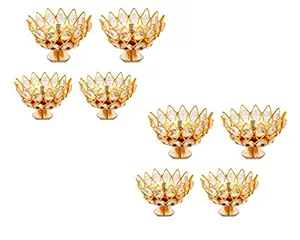परिचय
भरत की राम से भेंट रामायण की सबसे मार्मिक और प्रेरणादायक घटनाओं में से एक है। जब भरत को अपने पिता दशरथ की मृत्यु और राम के वनवास के बारे में पता चला, तो उन्होंने अपनी माता कैकेयी को कठोर शब्दों में फटकार लगाई और राज्य स्वीकार करने से इंकार कर दिया। वे राम को अयोध्या वापस लाने के लिए चित्रकूट गए, लेकिन जब राम ने लौटने से इंकार कर दिया, तो भरत ने उनकी चरण पादुकाएँ लीं और उन्हें सिंहासन पर रखकर राज्य चलाने का संकल्प लिया।
भरत को सच्चाई का पता चलता है
भरत जब अपने ननिहाल से अयोध्या लौटे, तो उन्होंने अपने पिता की मृत्यु और राम के वनवास की जानकारी पाई। यह सुनकर वे अत्यंत दुखी हुए और अपनी माता कैकेयी से क्रोधित होकर बोले कि उन्होंने अन्याय किया है। भरत ने राजा बनने से साफ मना कर दिया और तुरंत राम को वापस लाने का निश्चय किया।
भरत का चित्रकूट आगमन
भरत अपने साथ अपनी सेना, परिवार, ऋषि-मुनियों और मंत्रियों को लेकर चित्रकूट पहुंचे। वहाँ पहुँचते ही वे राम के चरणों में गिर पड़े और उनसे अयोध्या लौटने का अनुरोध किया। भरत ने कहा कि उन्हें राज्य में कोई रुचि नहीं है और अयोध्या उनके बिना अधूरी है।
राम का इनकार
भरत की विनती के बावजूद, राम ने स्पष्ट रूप से कहा कि वे वनवास की अवधि पूरी किए बिना वापस नहीं लौट सकते। उन्होंने पिता की आज्ञा का पालन करने और धर्म का अनुसरण करने का महत्व समझाया।
भरत द्वारा राम की पादुकाएँ ग्रहण करना
जब राम ने लौटने से मना कर दिया, तो भरत ने उनसे उनकी चरण पादुकाएँ देने की विनती की। भरत ने कहा कि वे इन्हें सिंहासन पर रखेंगे और स्वयं केवल राम के प्रतिनिधि के रूप में शासन करेंगे।
नंदिग्राम में भरत का शासन
भरत ने स्वयं महल में न रहकर नंदिग्राम में तपस्वी के समान जीवन व्यतीत किया। उन्होंने अत्यंत निष्ठा और न्याय के साथ अयोध्या का शासन चलाया और राम की वापसी की प्रतीक्षा की।
निष्कर्ष
भरत का त्याग और भक्ति उन्हें रामायण के सबसे सम्मानित पात्रों में से एक बनाता है। उन्होंने धर्म का पालन किया और एक आदर्श भाई का उदाहरण प्रस्तुत किया।
Introduction
Story Overview
This story narrates Bharata’s visit to Lord Rama and his refusal to rule Ayodhya in Rama’s absence.
Significance
The episode emphasizes loyalty, devotion, and adherence to dharma over personal ambition.
Main Characters
Key figures include Lord Rama, Bharata, Sita, and other royal family members.
Setting
The events take place in Ayodhya and during the exile of Lord Rama in the forest.
Moral Lessons
The story teaches duty, loyalty, humility, and respect for rightful authority.
Bharata's Devotion
Meeting Rama
Bharata visits Rama in the forest to express his devotion and urge him to return to Ayodhya.
Refusal to Rule
Bharata refuses to ascend the throne, insisting that Rama is the rightful king.
Symbolic Gesture
Bharata takes Rama’s sandals as a symbol of loyalty and to rule on Rama’s behalf.
Responsibility
Bharata governs Ayodhya with the understanding that he is a caretaker until Rama returns.
Lessons
This teaches humility, patience, and respect for family and dharma.
Significance of the Episode
Loyalty to Dharma
The story exemplifies putting dharma and duty above personal gain.
Family Devotion
Bharata's love and respect for Rama highlight the importance of family bonds.
Symbol of Leadership
Rama’s sandals symbolize rightful authority and leadership during his absence.
Moral Inspiration
The episode inspires readers to act with integrity, humility, and responsibility.
Spiritual Teachings
The story emphasizes devotion, selflessness, and the spiritual importance of honoring dharma.
Rama's Virtue
Righteousness
Rama’s virtues of honesty, patience, and righteousness are central to the narrative.
Divine Example
Rama represents the ideal king, embodying justice, compassion, and moral integrity.
Inspiration
Rama’s life provides guidance for leadership, morality, and spiritual conduct.
Patience
Rama demonstrates patience and wisdom during his exile, setting an example of perseverance.
Moral Guidance
His actions serve as lessons for ethical behavior, leadership, and devotion.
Lessons from the Episode
Humility
The story teaches humility and selflessness in positions of responsibility.
Obedience to Duty
It emphasizes obedience to dharma and moral obligations above personal desires.
Family Values
The narrative highlights the importance of loyalty, respect, and love within families.
Symbolism
Rama’s sandals symbolize rightful authority, loyalty, and adherence to dharma.
Spiritual Insight
The story conveys spiritual lessons about devotion, responsibility, and moral conduct.
This story narrates Bharata’s visit to Lord Rama and his refusal to rule Ayodhya in Rama’s absence.
The episode emphasizes loyalty, devotion, and adherence to dharma over personal ambition.
Key figures include Lord Rama, Bharata, Sita, and other royal family members.
The events take place in Ayodhya and during the exile of Lord Rama in the forest.
The story teaches duty, loyalty, humility, and respect for rightful authority.
Bharata visits Rama in the forest to express his devotion and urge him to return to Ayodhya.
Bharata refuses to ascend the throne, insisting that Rama is the rightful king.
Bharata takes Rama’s sandals as a symbol of loyalty and to rule on Rama’s behalf.
Bharata governs Ayodhya with the understanding that he is a caretaker until Rama returns.
This teaches humility, patience, and respect for family and dharma.
The story exemplifies putting dharma and duty above personal gain.
Bharata's love and respect for Rama highlight the importance of family bonds.
Rama’s sandals symbolize rightful authority and leadership during his absence.
The episode inspires readers to act with integrity, humility, and responsibility.
The story emphasizes devotion, selflessness, and the spiritual importance of honoring dharma.
Rama’s virtues of honesty, patience, and righteousness are central to the narrative.
Rama represents the ideal king, embodying justice, compassion, and moral integrity.
Rama’s life provides guidance for leadership, morality, and spiritual conduct.
Rama demonstrates patience and wisdom during his exile, setting an example of perseverance.
His actions serve as lessons for ethical behavior, leadership, and devotion.
The story teaches humility and selflessness in positions of responsibility.
It emphasizes obedience to dharma and moral obligations above personal desires.
The narrative highlights the importance of loyalty, respect, and love within families.
Rama’s sandals symbolize rightful authority, loyalty, and adherence to dharma.
The story conveys spiritual lessons about devotion, responsibility, and moral conduct.


